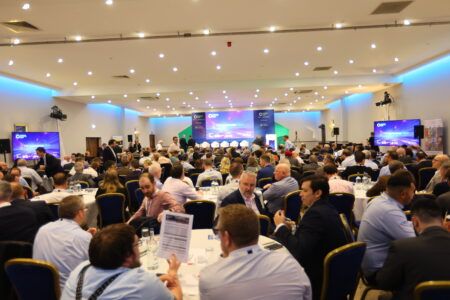Seoul Robotics is using CES 2023 in Las Vegas this week to launch its Sensr 3.0 3D perception platform, which it says makes comprehensive 3D perception easily accessible for any application and user, regardless of previous experience with this technology.
When embedded into 3D sensors such as lidar, Sensr uses AI deep learning to track, detect, and identify hundreds of objects at once within a 4cm range. As it collects more data, Sensr 3.0 continues to improve over time, unlocking unparalleled insights into environments.
Seoul Robotics works with partners across the intelligent transport systems (ITS), security, retail, airport, rail, and smart city industries to construct and deploy these transformative solutions that avoid collisions, make traffic flow more efficient, and monitor spaces for unauthorized personnel.
“Imagine what we can accomplish if we can more accurately perceive our world beyond what’s visible to the human eye: roadways will be safer for both drivers and pedestrians, stores are optimized based on the customer journey, and airports experience reduced wait times. Those are just the immediate benefits that come from installing 3D systems,” says William Muller, vice president of business development at Seoul Robotics. “With Sensr 3.0, never before has it been so simple to set up, calibrate, and scale a 3D system, and this will revolutionize how companies gain value from our technology.”
Organizations are increasingly looking for solutions that can provide an additional dimension of intelligence without the privacy concerns of always-on recordings. With the price point of 3D systems now in the same bracket as 2D cameras, a growing number of cities, states, and private companies are leveraging this technology to create smarter, safer, and more efficient spaces.
Easy setup
Included with the software is QuickTune, a new snap-to-point tool to expedite sensor calibration; and QuickSite, a first-of-its-kind site simulation tool that enables users to virtually design and scale 3D systems, reducing installation times.
QuickTune makes it easier for any user to install and calibrate 3D systems, whether an expert or a novice. During setup, QuickTune finds commonalities in an environment, such as a wall or corner, and automatically calibrates multiple sensors in a system to speed up deployments.
In addition to leveraging QuickTune to automatically identify a common point, users also have the option to select a specific spot for sensors to calibrate around. QuickTune is especially valuable for multi-sensor installations, requiring just a few clicks to dramatically reduce calibration time.
Because the SENSR platform is both hardware- and sensor-agnostic, it is compatible with a range of different systems and can be configured depending on application, needs, and budget. This flexibility, coupled with the platform’s sensor fusion capabilities, makes it highly scalable even across large footprints.
Seoul Robotics will be showcasing Sensr 3.0 along with its full suite of 3D solutions and features during CES 2023. Visit Booth #5408 in the West Hall of the Las Vegas Convention Center to learn more about the company’s comprehensive, scalable 3D offerings.




